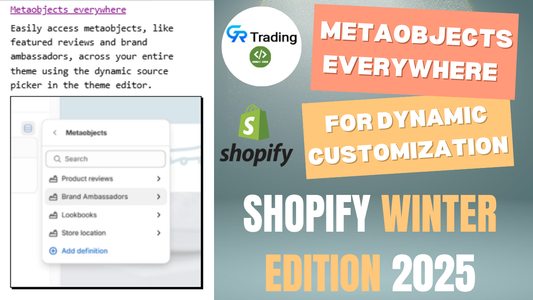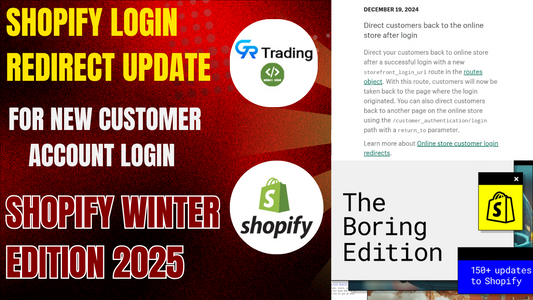Most Shopify blogs educate, inspire, and attract visitors—but fail to convert them.
Why? Because Shopify doesn’t natively show related products inside blog posts.
By integrating your products directly into your articles, you create a seamless content-to-commerce bridge that improves SEO, keeps readers engaged longer, and subtly drives sales.
💬 “Every blog post should be a story that ends in a sale.”
Introduction: Blogs That Don’t Convert Are a Missed Opportunity
Shopify store owners pour hours into creating blog content—writing tutorials, styling guides, and product tips. Yet, most posts end with nothing but a comment box.
There’s no product suggestion, no “Shop Now” nudge, and no reason for the reader to continue browsing.
That’s the gap: Shopify blogs aren’t shoppable by default.
Once a reader finishes your content, they simply… leave.
Adding related products directly within your Shopify blog posts changes that completely. It keeps readers moving forward—toward a purchase.
💬 “Don’t let your best content be a dead end.”
1️⃣ Turning Content Into a Sales Funnel
Your Shopify blog isn’t just for storytelling—it’s a subtle sales engine.
When you add related products inside your articles, you move readers from awareness to intent without breaking their flow.
📘 Example:
-
A fitness brand posts “5 Best Yoga Routines for Beginners.”
→ Related products: Yoga mats, resistance bands, water bottles. -
A skincare brand writes “How to Build a Nighttime Routine.”
→ Related products: Face wash, toner, moisturizer.
Each related product acts like a silent salesperson—building context, trust, and desire. The reader doesn’t feel “sold to”; they feel guided.
💡 “Content sells best when it doesn’t look like selling.”
2️⃣ Boosting On-Page SEO and Internal Linking
Internal linking is one of the most underrated Shopify SEO strategies.
When you link products inside your blogs, you’re not just helping readers—you’re helping Google understand your site better.
Here’s what happens:
-
Search engines discover product URLs through your articles.
-
Relevance between product and content increases keyword strength.
-
Bounce rate drops as readers click through to explore products.
Example:
An article titled “How to Style Oversized Outfits” links to a “Cotton Oversized T-Shirt” product.
Now both the blog and product rank better for “cotton oversized T-shirt.”
📈 Result? Free SEO boost + higher conversion path.
3️⃣ Keeping Readers Engaged Longer
A blog without interaction is like a showroom with no products.
By embedding clickable product blocks, prices, and “Add to Cart” buttons within posts, you transform reading into browsing.
Imagine a post called “Eco-Friendly Gift Ideas” that shows:
-
🌿 Bamboo bottles
-
🍱 Reusable lunch boxes
-
👕 Organic cotton tees
Readers discover, engage, and sometimes—buy—without ever leaving the article.
That’s smoother navigation, longer session time, and better engagement metrics—Google loves that.
💬 “When readers stop scrolling, they start shopping.”
4️⃣ Real-World Use Cases
Different industries can all benefit from this strategy:
🧴 Beauty Stores: Tutorials like “Morning Skincare Routine” can showcase the exact products being used.
👕 Fashion Brands: Articles like “How to Style Oversized Tees” can display featured products right under each outfit.
🍳 Kitchenware Stores: Recipe blogs can include utensils or ingredients for instant purchase.
🛋️ Home Decor Stores: Design posts can show decor items mentioned in the text.
🧘 Health & Wellness Brands: Fitness guides can link directly to their mats, supplements, or bands.
Each example uses one powerful idea: Relevance = Conversion.
5️⃣ Increasing AOV (Average Order Value)
When readers see related items in one article, they naturally start bundling.
A post on “Building a Capsule Wardrobe” could feature five minimalist staples.
A visitor may buy two or three together—no upselling pop-up needed.
That’s how simple content placement can quietly raise your average order value and your profit per visitor.
💬 “The smartest cross-sell is the one that feels like good advice.”
5️⃣ Increasing AOV (Average Order Value)
When readers see related items in one article, they naturally start bundling.
A post on “Building a Capsule Wardrobe” could feature five minimalist staples.
A visitor may buy two or three together—no upselling pop-up needed.
That’s how simple content placement can quietly raise your average order value and your profit per visitor.
💬 “The smartest cross-sell is the one that feels like good advice.”
6️⃣ Building Trust Through Context
When products appear naturally inside valuable content, they stop feeling like ads.
Readers perceive your recommendations as guidance, not marketing.
That emotional shift builds trust—and trust converts.
Your brand becomes a helpful expert rather than a pushy seller.
And that’s the ultimate long-term win for both SEO and loyalty.
Conclusion: Content and Commerce Shouldn’t Be Separate
Shopify makes blogging simple—but it stops short of connecting content with commerce.
Adding related products into your blog posts bridges that gap beautifully.
By merging storytelling with product discovery, you transform a regular blog into an always - on sales channel.
It’s not aggressive marketing—it’s smart, contextual selling.
So if you’re serious about scaling your Shopify store:
🧠 Don’t just post content. Make every article shoppable.
Things not to miss
If your Shopify blog got 1,000 readers this month-but zero sales—what would happen if just 5% clicked a product? That’s your next growth lever.
#ShopifySEO #EcommerceTips #ShopifyDevelopment #ShopifyApps #ShopifyDesign #ContentMarketing #ConversionOptimization #EcommerceGrowth


